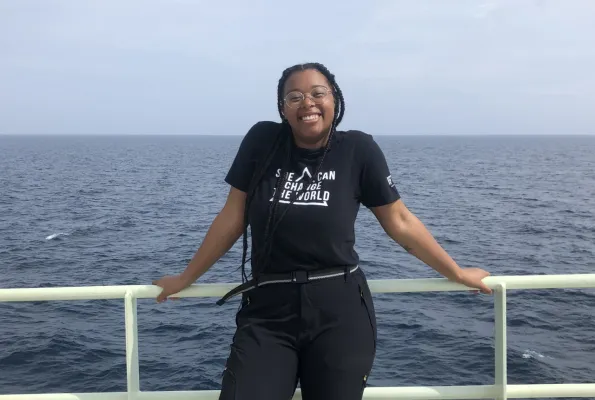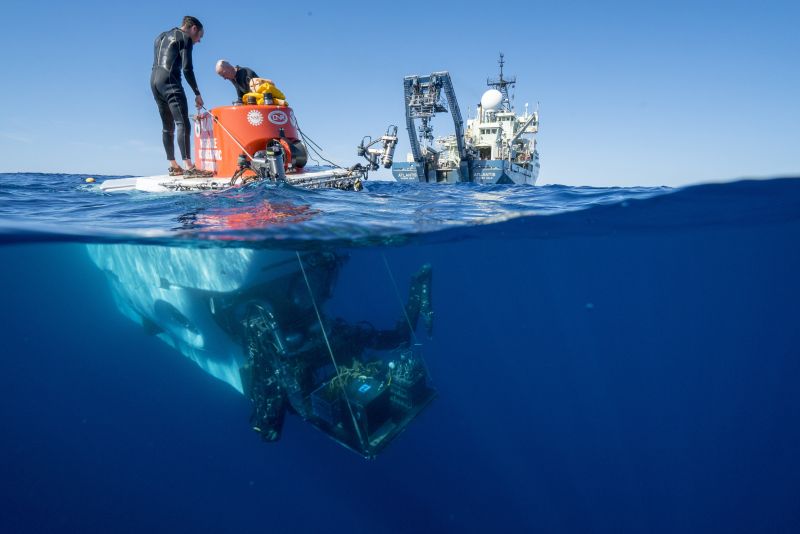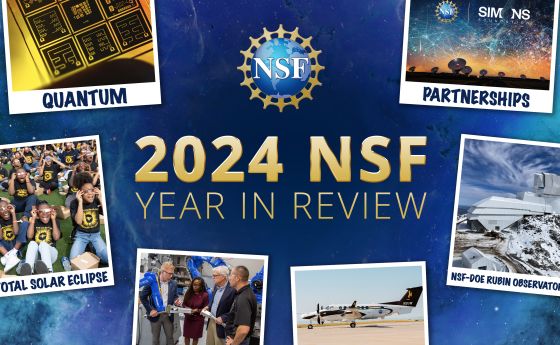
A love for marine life
Naiyiri-Blu Brooker grew up in a military family stationed in rural Germany, far from the sea. Nevertheless, she has been obsessed by marine life since childhood. “I would annoy my family by making them sit down in the living room while I gave them a presentation about any type of marine organism I could. I did that for a very long time. Sorry, Mom and Dad.”
After her family moved to New York, she enrolled in Lehman College to study biology. As an aspiring marine biologist, she was frustrated that, except for one class, the program was very biomedically oriented. Then she stumbled across a poster for the U.S. National Science Foundation's Research Experiences for Undergraduates (REU) at LUMCON, the Louisiana Universities Consortium for Marine Sciences. Naiyiri jumped at the chance. The NSF Research Experiences for Undergraduates Sites Program is designed to give undergraduate students the opportunity to gain valuable research experience to prepare them for STEM degrees and careers. The program also provides students with the opportunity to live in a new area for a short period of time and to experience what graduate study can be like.
The program covers all expenses and provides a stipend for participants while they conduct research. REU sites accept students from a wide variety of universities, providing a way for students from diverse backgrounds to work with state-of-the-art equipment and to form important network connections with their peers and research mentors.
Lessons in marine research
Working with LUMCON mentors Craig McClain and Clif Nunnally, Naiyiri chose to study the biodiversity of Terrebonne Bay, the body of water near LUMCON’s facility in Cocodrie, Louisiana. Working aboard a research boat, she collected specimens and then returned to the laboratory, using a microscope to identify and record the marine species in her samples. While she did get to spend some time on the water, Naiyiri found that most of marine biology is done in front of a computer, in a laboratory processing samples … or behind a microscope. “That was one of my favorite parts, as I’m just obsessed by marine invertebrates. I want to see them all the time, so sitting in front of a microscope for hours on end, looking at tiny, tiny, tiny invertebrates – yeah, you can sign me up multiple times for that!”
In her research, she looked at changes in species richness, the number of species within a given sample, as distance from shore increased. “I was looking at the seabed and saw that there were a lot of broken shells inshore. I thought that the predation rate [proportion of the population killed by predators] would be higher, and so the species richness would be less inshore. I learned through my research that it was the other way round.”
One of her biggest takeaways from the experience is that "you don’t really have to have this mind-blowing answer when you’re doing your research, but you’re still learning something. Your hypothesis might be wrong, but you keep going. There’s more research to be done afterwards.”
Deep-sea opportunity
Naiyiri got the opportunity to do more research a few months later, when she was invited to return to LUMCON to join an expedition aboard the NSF-supported Research Vessel Atlantis to study deep-sea woodfall in the Gulf of Mexico.
In the deep-sea waters, the seabed can be like a desert, with little food available. Occasionally, the carcass of a dead whale or logs that have been washed out to sea appear. These irregular sources of food are like “pop-up restaurants” and quickly become populated with deep-sea species, such as teredo worms – a type of clam infamous for burrowing into and damaging the hulls of wooden ships.
“There are all of these questions about these deep-sea ship worms” said Naiyiri. “What happens when wood gets washed out to sea in rivers? How does the wood even get to the bottom of the ocean? Then how do these ship worms find this pop-up, deep-sea food source? What happens when the ship worms find this wood? What other organisms inhabit these wood oases that last just a few months or years? There are all of these ‘what happens when’ questions.”
For the project, also funded by NSF, the researchers sank wood and used the submersible Alvin to collect samples to study how the woodfalls were colonized and the unique ecosystems that formed on the wood.
“When they brought the wood up, I saw lots of sea anemones, polychaetes [segmented worms], and lots of galatheids. These are deep-sea squat lobsters. They look very cool -- they’re white and they have these orange eyes. They look a little creepy, but that’s just part of their charm,” said Naiyiri.
Her week on the RV Atlantis was a life-changing experience.
Nurturing a lifetime interest in STEM
The Division of Ocean Sciences has been funding Research Experiences for Undergraduates for over 30 years. It is not surprising that the unique research experiences the program offers can serve as the spark that sets a student on a path leading to a successful STEM career. The REU program can help solidify student career paths and can be an important step in helping students see themselves as scientists.
“The REU program is one of NSF’s premier programs for encouraging the next generation of the scientific workforce” said Lisa Rom, Director of Ocean Education Programs for NSF. “The Division of Ocean Sciences supports about thirty REU sites each summer that are located at academic institutions and marine laboratories. The REU sites give student a taste of how science is done and encourage them to become independent, critical thinkers.”
The REU experience certainly had a major impact on Naiyiri, as she is looking to continue doing research and plans to attend graduate school to continue studying the sea snails and crustaceans she loves. “Before I started with the internship, I was very obsessed with octopuses. I had my little presentations about them that I would give to my family. They were the invertebrates I just loved to learn about. But now I think I’ve become more enamored of gastropods or sea snails and crustaceans. I think I like the shelled gastropods just a tiny bit more. I think they’re very cool. Their shells are so pretty. Also, there’s really interesting research being done on them neurologically. They’re just pretty cool – gastropods are awesome!”





